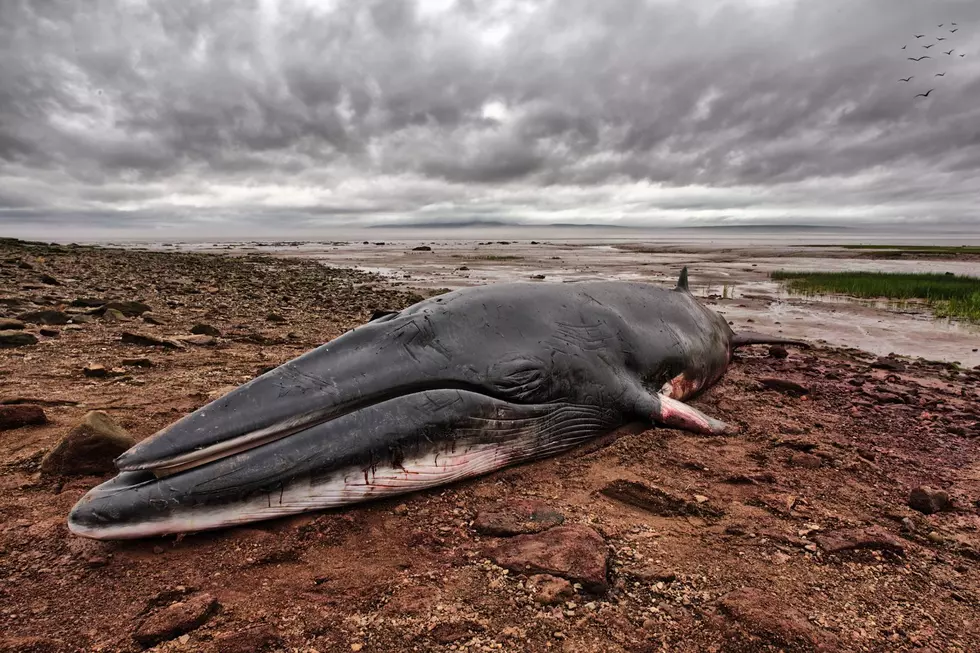
A Third and Fourth Whale Have Washed Ashore on the Oregon Coast
A disturbing trend has been established this winter on the Oregon coast. In just the past week and a half, the scenic destination has seen four whales wash ashore dead. The first instances (read below) were both sperm whales, one adult, the other a juvenile, who washed showed up on a beach just outside Astoria.
This latest instance continued last Wednesday when a baby gray whale was found dead near Cannon Beach. No trauma was seen on the corpse and scientists with the Seaside Aquarium say it appears that the whale was stillborn.
Fast-forward to Saturday, when an adult gray whale washed up overnight in the same area. This whale appeared to have been bitten by a shark, albeit after death, according to authorities. That whale appeared to have been dead and a drift for at least a month.
Scientists with National Oceanic and Atmospheric Administration (NOAA) say that Oregon may see around a dozen whale beachings each year, on average. However, they add that seeing four whales in such a short amount of time is nearly unprecedented. Both the gray whales and sperm whales are currently migrating south to their collective breeding and birthing grounds in Baja, California.
The stillborn gray whale, say scientists, does open up a rare opportunity for a look into the lives of the creatures, as the number of calves born each year has been in decline in recent years.
NOAA also says that they have been monitoring what they call "an unusual mortality event," as the gray whale population has begun dropping recently, and they've seen an increased number beachings, as well.
Information on the first two beachings from last week is as follows:
According to authorities with the Seaside Aquarium in Oregon, a second deceased sperm whale has washed ashore on the coast, near Astoria. A mere 100 yards from where a different sperm whale came ashore back on January 14th.
This most recent sperm whale was much younger and smaller that the first, measuring just 12 feet in length. This compared to the first whale, which was 40 feet long.
Another difference in this smaller, younger whale, is that it appears that it wasn't struck by any kind of ship, or vessel, nor harmed through human activity. A necropsy is scheduled soon, but officials say the whale has no visual signs of trauma. However, they do say that they believe the young whale (it has not been released as to whether the whale is male, or female) more than likely "failed to thrive."
No specific evidence has been given yet as to what makes biologists feel that the whale failed to thrive, other than the lack of visible wounds.
The first beaching on the 14th of January was a large sperm whale, though thought to still be a juvenile. That whale also had visible lacerations across its body and is though to have been dead for sometime before it came to shore.
Some scientists believe the recent "king tides" in that region could be the reason why both whales were pushed to shore. So called king tides happen when happen the sun and moon align to cause higher tides than normal, and can produce large 15- to 18-foot waves.
Often, when a single, live whale becomes beached it is the result of sickness or injury (as we saw in the first beached whale earlier this month). Bad weather, old age, navigation errors, and other reasons also contribute to whale beachings. Interestingly enough, toothed whales are the most commonly affected.
Sperm whales are not only a toothed, or Odontoceti, whale, they are also the largest toothed predator on planet earth. The largest sperm whales grow to 60 feet in length and can live more than 60 years. According to NOAA Fisheries, "...they are named after the waxy substance—spermaceti—found in their heads. The spermaceti is an oil sac that helps the whales focus sound. Spermaceti was used in oil lamps, lubricants, and candles."
Sperm whales were hunted to near extinction from the 1800's until the late 1980's. Though currently, the estimated number of sperm whales world wide stands at ~300,000.
This time of year (winter, if you're reading this late) sperm whales on the west coast of North America are traveling south to their traditional breeding grounds near Baja, California.
LOOK: 23 astronomical events to look out for in 2023
Gallery Credit: Martha Sandoval
More From 610 KONA









